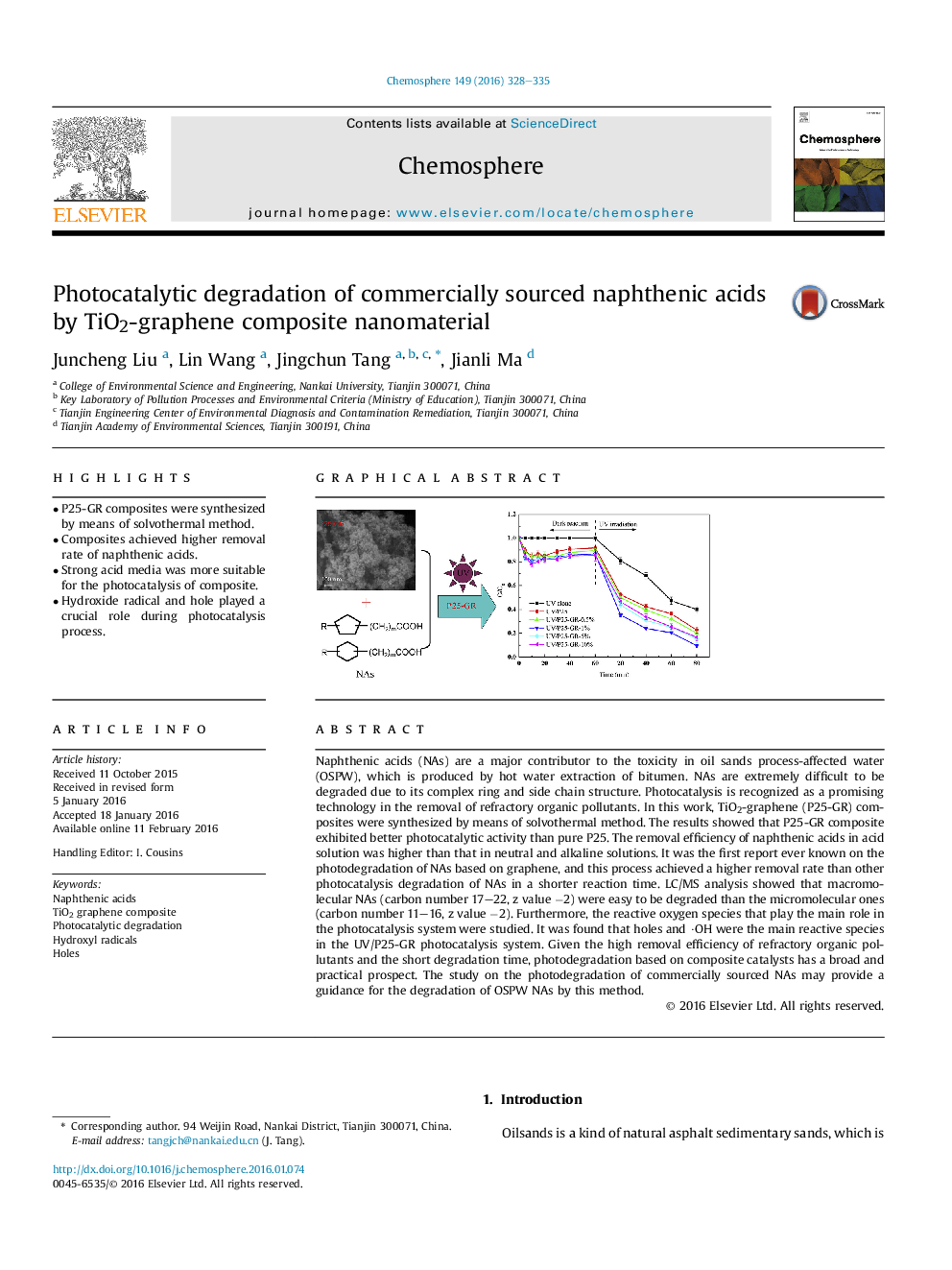| کد مقاله | کد نشریه | سال انتشار | مقاله انگلیسی | نسخه تمام متن |
|---|---|---|---|---|
| 4407892 | 1618822 | 2016 | 8 صفحه PDF | دانلود رایگان |

• P25-GR composites were synthesized by means of solvothermal method.
• Composites achieved higher removal rate of naphthenic acids.
• Strong acid media was more suitable for the photocatalysis of composite.
• Hydroxide radical and hole played a crucial role during photocatalysis process.
Naphthenic acids (NAs) are a major contributor to the toxicity in oil sands process-affected water (OSPW), which is produced by hot water extraction of bitumen. NAs are extremely difficult to be degraded due to its complex ring and side chain structure. Photocatalysis is recognized as a promising technology in the removal of refractory organic pollutants. In this work, TiO2-graphene (P25-GR) composites were synthesized by means of solvothermal method. The results showed that P25-GR composite exhibited better photocatalytic activity than pure P25. The removal efficiency of naphthenic acids in acid solution was higher than that in neutral and alkaline solutions. It was the first report ever known on the photodegradation of NAs based on graphene, and this process achieved a higher removal rate than other photocatalysis degradation of NAs in a shorter reaction time. LC/MS analysis showed that macromolecular NAs (carbon number 17–22, z value −2) were easy to be degraded than the micromolecular ones (carbon number 11–16, z value −2). Furthermore, the reactive oxygen species that play the main role in the photocatalysis system were studied. It was found that holes and ·OH were the main reactive species in the UV/P25-GR photocatalysis system. Given the high removal efficiency of refractory organic pollutants and the short degradation time, photodegradation based on composite catalysts has a broad and practical prospect. The study on the photodegradation of commercially sourced NAs may provide a guidance for the degradation of OSPW NAs by this method.
Figure optionsDownload as PowerPoint slide
Journal: Chemosphere - Volume 149, April 2016, Pages 328–335